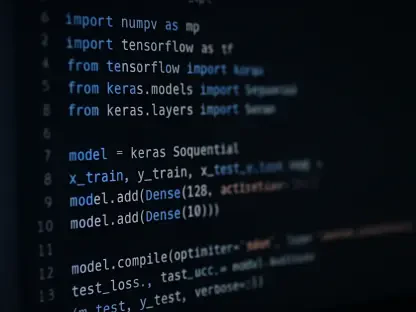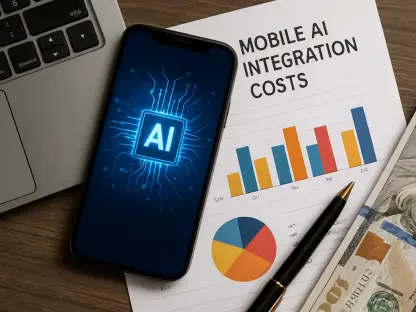I’m thrilled to sit down with Anand Naidu, our resident development expert, who brings a wealth of knowledge in both frontend and backend technologies. With his deep understanding of various coding languages and trends in software development, Anand offers unique perspectives on the evolving landscape of AI coding assistants, often referred to as vibe coding tools. In this engaging conversation, we dive into the recent surge in pricing for these tools, the underlying factors driving costs, their growing importance in the development process, and how developers and companies are adapting to these changes. We also explore the balance between leveraging AI tools and traditional development approaches, as well as the future implications for IT budgets and productivity.
What are your thoughts on the recent price increases for AI coding assistants, and do you see this as a long-term shift or a passing phase?
Honestly, I think the price hikes we’re seeing in tools like these are a reflection of the real costs behind them. Developing and maintaining AI coding assistants involves heavy investment in infrastructure, and with GPU shortages and high model licensing fees, vendors are passing those costs on to users. I don’t see this as a temporary blip; it’s likely to stick around until there’s a breakthrough in cheaper model architectures or more efficient resource usage. The market is still maturing, and as long as demand keeps growing, vendors won’t have much incentive to lower prices.
Can you break down why the costs for vibe coding tools are remaining so high, especially in terms of infrastructure challenges?
Sure, a big part of it comes down to the hardware and infrastructure needed to run these powerful models. GPUs, which are essential for training and inference, are in short supply, and that scarcity drives up costs. Beyond that, the energy consumption for running these systems is enormous, and data center overheads add up quickly. Then you’ve got licensing fees for the underlying models, which aren’t cheap either. All these factors create a perfect storm of high operational costs that get reflected in the pricing for end users.
How are developers and companies responding to the faster credit consumption and higher usage costs of these tools?
Developers are definitely feeling the pinch. I’ve seen a lot of frustration on social media and platforms like GitHub, where folks are venting about how quickly they burn through credits now. Many are looking for workarounds, like optimizing prompts to reduce token usage or switching to smaller models for less complex tasks. On the enterprise side, companies are starting to treat these tools as a necessary expense rather than a bonus. Some are negotiating bulk licenses or setting stricter usage guidelines to manage costs, but it’s clear there’s a learning curve in adapting to this new cost structure.
With surveys showing over 80% of developers using or planning to use AI tools, how integral have these tools become to modern development workflows?
They’ve become incredibly integral, almost indispensable for many teams. The adoption rate speaks for itself—developers are seeing real value in faster coding, fewer bugs, and quicker delivery times. These tools help catch errors early, suggest optimizations, and even handle repetitive tasks, freeing up time for more creative problem-solving. I’d say for most teams, vibe coding tools have shifted from a nice-to-have to a core part of the toolkit, especially in competitive environments where speed and quality are everything.
There’s advice out there for CIOs to treat vibe coding tools as a core productivity expense. Do you think that’s the right mindset, and how does the cost stack up against traditional hiring?
I completely agree with that mindset. These tools are no longer just an add-on; they’re a fundamental driver of productivity. When you look at the cost, even with the recent hikes, a seat for an AI tool is still a fraction of what you’d pay for a full-time developer, who might cost six figures a year. The return on investment is strong—teams ship code faster, make fewer mistakes, and can scale output without scaling headcount. For many organizations, especially startups or mid-sized firms, that’s a game-changer.
Some analysts argue that for large-scale, complex projects, the combined cost of AI tools and oversight might rival or exceed hiring a developer. What’s your take on that?
I think there’s truth to that in certain scenarios. For massive, intricate projects with lots of custom requirements, AI tools can’t fully replace human expertise. The cost of the tool, plus the time senior developers spend reviewing and tweaking AI-generated code, can add up. I’ve seen cases where it’s more efficient to have a skilled developer handle the heavy lifting from the start. That said, AI still shines for prototyping or handling simpler modules within those projects. It’s about finding the right balance—using tools where they save time and leaning on human talent for the nuanced, high-stakes work.
What’s your forecast for the future of vibe coding tools in terms of cost and adoption over the next few years?
I think we’re going to see continued adoption as these tools become even more embedded in development workflows. On the cost side, I don’t expect prices to drop significantly anytime soon unless there’s a major shift in hardware availability or model efficiency. If anything, as codebases grow and usage scales, costs might creep up for enterprises. However, I’m optimistic that competition will drive innovation—maybe we’ll see vendors offering tiered pricing or hybrid models that balance cost and performance. It’s an exciting space to watch, and I think the next few years will define whether these tools become truly universal or remain a premium option for those who can afford them.









